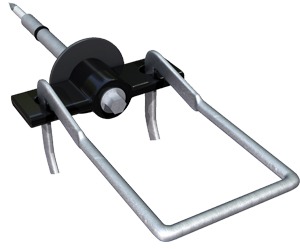Connectors, Anchors and Fasteners
The Role of Pintles in Wall Anchoring
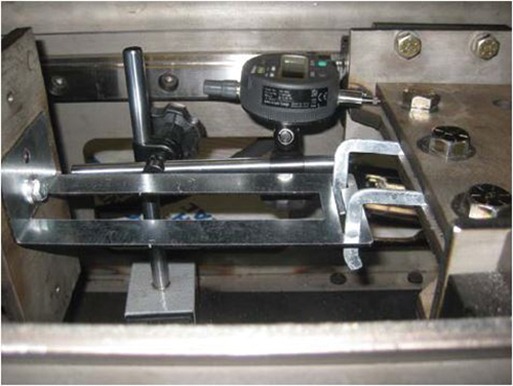
??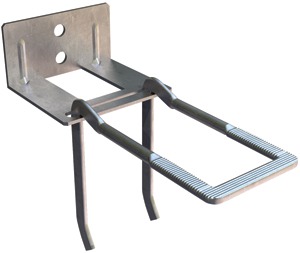 |
|
| The Thermal 2-Seal Wing Nut Anchor is a single-screw veneer tie for metal stud construction. |
I’ve often said that if something is easy to install, it will tend to be installed correctly. Our goal in selecting a masonry veneer anchoring system will be to design around wind loads specific to the project, yet to keep the installation as efficient and straightforward as possible for the contractor.
It sometimes may seem that masonry anchoring systems are in a perpetual state of transformation. These changes often may occur as a result of meeting new code requirements, building industry trends, energy requirements, or new methodologies of construction.
As an example, we see a change in today’s veneer anchoring needs, since the use of mineral wool as insulation has become more prevalent when looking to comply with NFPA-285 requirements. Because mineral wool has a lower R-value than that of rigid insulations, the wall cavities have to become larger to accommodate more of it. Larger cavities may require heavier anchoring systems in general.
|
|
|
| Shown is a two-seal thermal wingnut with 2X hook |
We should examine from where wall anchoring has come, before we delve too far into where it is going. Initially, the anchoring system that integrated into the CMU backup was simply a rectangular tie welded to the cross rods of the wall reinforcing. There was no real adjustability to speak of, and the mason was challenged continually in keeping the masonry coursing in sync.
Often enough, these static anchors were bent and mangled to be made part of the wall or, in some cases, simply bent out of the way and rendered useless. When using this type of anchoring system, wind loads put tremendous stress on the cross wires of the wall reinforcing during compression. This ultimately compromised the integrity of the veneer, which spurred the development of the adjustable pintles we use in integrated wall anchoring today.
The adjustable pintle allowed the mason to work much faster. The coursing was not required to have the same precision as the non-adjustable system, because the mason had 1.25 inches of adjustability within the pintle tie. The secondary operation of installing the pintle anchors into the eyelets of the wire reinforcing was done at the same time the brick veneer was laid. Lateral loads were transferred to the structural backup of the wall much more efficiently, and the hook-and-eye system became the industry standard for decades to come.
| Heckmann Building Products Celebrates 90 years |
| As one of the oldest and most experienced companies in the industry, Heckmann Building Products has seen times change and has adapted to survive and succeed.
Richard Heckmann’s father and grandfather were stone masons who immigrated to America in 1800s, starting a masonry/stone business in St. Charles, Mo. In 1923, Richard started a tool and die shop in Chicago, where he began making machinery to fabricate anchors and ties for Chicago-area mason contractors. Throughout the 1920s and 1930s, Heckmann developed a reputation for quality construction products. Upon Richard’s passing in the late-1950s his daughter, Patricia Heckmann Curtis, took control as president and CEO, managing all the operations at a time when most women remained at home. Patricia and her husband, Howard Curtis, guided the company from the 1960s until turning over the business to their children, Terry, Sue and Paul Curtis in the 1980s. Terry retired in 2012. Paul and Sue are continuing to provide masonry anchors and ties along with the family’s fourth-generation descendants, who are learning to guide the business further into the 21st century. Not only is family important to Heckmann, but also the team is supporting American businesses. With the exception of a few resale items, the vast majority of products are manufactured entirely in the United States, or manufactured by one of the company’s American partnering companies. The most popular product line, the Pos-i-Tie, is entirely made in the USA, down to the screw. Heckmann Building Products has shown its resiliency, having survived both the dark days of the 1930s Great Depression and the recent Great Recession. In a time of corporate buyouts and mergers, Heckmann is committed to remaining a family-owned and -operated business. Heckmann is excited to step into the next decade on its march toward 100 years. |
Because of its ease of installation, the pintle also works well with anchors often found in steel-stud backup walls. The commonly used back plate anchors or barrel screw anchors both are dependent on pintles to complete the masonry connection. Take, for instance, a barrel anchor modified with a wingnut on the end capable of receiving the pintle’s hooks. The anchor installs with a single drive of the screw gun, and the pintles are installed quickly as the brick is laid into the bed joint, rather than threading the traditional “adjustable” wire tie through the end of the barrel anchor.
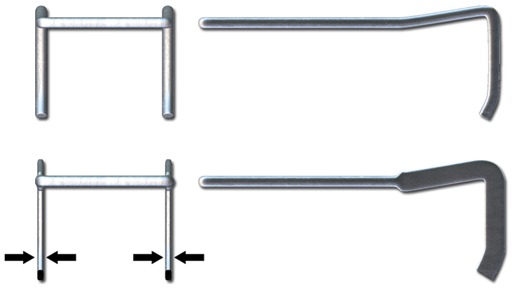
Shown are 2X Hooks.
What is imperative to the successful use of pintles incorporated in wall anchoring is assuring proper engagement of the hooks to the eyelets. The further the vertical eccentricity is expanded, the weaker the tie becomes. Traditional performance criteria for a pintle between two walls falls under ACI-530, where it allows for the maximum eccentricity for a wire tie of 3/16-inch diameter to be 1.25 inches. That 1.25-inch adjustability can be challenging when laying an economy- or utility-size brick with a height of 3 5/8 inches.
How can you lengthen the allowable adjustability? It’s not uncommon to see the wire thickness go from 3/16 inch to ?? inch, which, by code, also should change your mortar joints from 3/8 inch to a full ?? inch, though not always executed in the field.
The answer seems simple enough. You need to fit the strength of ??-inch steel into 3/16-inch wire. And so, we did. We have found that a modification in the pintle leg design achieves a significant increase in strength. By compressing the vertical legs of the pintles, both the strain hardening of the leg and the increased section modulus have increased drastically the working load of the anchor. This reinforcing has shown in testing to be at a minimum of twice the strength of the BIA Tech Note 44, which suggests that a tie have a “maximum deflection of 0.05 inch when tested at an axial load of 100 pound-inches tension or compression.” In cases in which the pintle was fully engaged to the anchor, the strength was more than 10 times the tech note requirement at the maximum deflection.
When the heavier ??-inch anchoring is required, as we see in the earlier mentioned example of wall cavities becoming wider, or in hurricane-prone areas with greater wind loads, this same principle can apply. Flattening the legs will add strength and adjustability of up to 2.25 inches. If you also compress the back of the anchor that sits in the bed joint, it will allow for a larger wire diameter to sit in a traditional 3/8-inch of mortar. This can be used in conjunction with a high-strength back plate anchor for an engineered high-strength anchoring system.
So, while conventionally thought of as an adjacency to wall reinforcing, the pintle has a beneficial role in today’s masonry wall, due to its ease and speed of installation, adjustability in the field, economical cost, and – now more than ever – its strength. At a minimum of twice the performance standard, an old accessory has been given a second look as an integral part of wall anchoring.
| Product Watch |
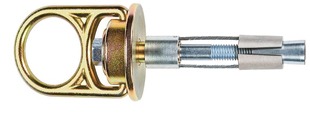 MSA’s new Anchorage Connectors include the MEGA Swivel (in zinc alloy or stainless steel, and for use in concrete or steel), the MEGA Swivel Hybrid, the Toggle Lok Concrete Anchor and the Weld-on Puck. Maximum weight capacity for the connectors extends to 400 pounds. Durable, removable and reusable, MSA anchorage connectors are a great solution for rounding out your fall protection accessory needs. MSA’s new Anchorage Connectors include the MEGA Swivel (in zinc alloy or stainless steel, and for use in concrete or steel), the MEGA Swivel Hybrid, the Toggle Lok Concrete Anchor and the Weld-on Puck. Maximum weight capacity for the connectors extends to 400 pounds. Durable, removable and reusable, MSA anchorage connectors are a great solution for rounding out your fall protection accessory needs.
For more information, visit www.MSAsafety.com or call 800-MSA-2222. |
Jeremy Douglas is the director of architectural sales in the northeast for Hohmann & Barnard and is a certified construction product representative with CSI. Contact Jeremy at JeremyD@h-b.com.
